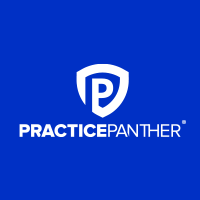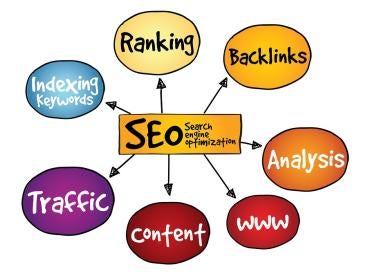In this extremely competitive search engine optimization (SEO) world, your website absolutely must stand out in this very crowded field. Your clients and potential clients are looking for you but they won’t find you if you don’t come out on top of a search engine results page (SERP).
To stand out, follow this checklist and audit to maximize your site’s ability to reach your strategic goals for your law practice.
Since Google is the number search engine by far, we will address issues that best optimize for Google’s searches.
First things first. Begin a website crawl running in the background while you perform other tasks in your SEO. Two useful tools to do this are Ahref’s Site Audit tool (Seven dollars for a seven-day trial) and Screaming Frog (free version available). These tools crawl sites for looking for broken links, best use of titles and metadata and duplicate and thin content, among many other things.
You’ll need to set up the free Google Analytics Platform, a powerful tool that you can use to look at your organic traffic, the quality of your current traffic, bounce rate, and identify pages that take too long to load, among many other benefits. It is the workhorse of the stable of Google’s free tools for SEO.
Let’s begin the SEO rundown.
- Google’s RankBrain is an artificial intelligence program that learns search behavior. It is an adaptive tool that guesses a user’s true intent.
There are several ways to optimize your site for RankBrain. Great content that explores context, the context in your meta description, improving your site’s click through rate (CTR) and writing content that compels readers to linger on your site all help to optimize for RankBrain.
- If Google is not indexing your site, you have a significant problem. You will have no organic visitors except for perhaps your dear old auntie to whom you gave the URL. Your site will be invisible to Google.
To get Google to index your site, go to the Google tool Search Console. This free tool allows you to make sure your site is indexed and optimized. This tool also helps you to determine pages that Google is indexing and shouldn’t be, and pages that are dead weight that drag down your ranking.
- Perform a keyword search and make sure your keywords are effective. There are several different ways to do this. Google has a tool called Adwords Keyword Planner. You might find that everyone else is using it to find keywords, and that may lead to a pile of generic, ubiquitous keywords.
Get creative. For example, go to Reddit or Quora, find your topic and look for terms that come up repeatedly in the stories. Those are your keywords.
You might go for the uncreative keyword acquisition route and simply swipe your competitor’s keywords. Find high-ranking sites that are within your scope and use the app tools SEMRush or Spyfu to acquire your new keywords.
When you type a word or phrase into the Google search bar, you may notice that it’s quick to bring up its own suggestions of what you really want to find. This is called Google Suggest. This is a wonderful resource for finding long tail keywords.
Speaking of your dear old auntie, you could use her help in developing keywords. Go to SeedKeywords.com and type in a scenario in this online tool, such as you want to get away to a place with no cell reception, lots of sand, blue water and plenty of marguerites. What would you search for? Send this to all your friends and relatives for their input. Gather all the pearls of keywords and long tail keywords at your leisure.
- Add your keyword to your H1 tag and meta description. Google puts more weight towards the front of your H1 tag so this is where you want your keyword. Your goal is to make the title and meta description so compelling that your reader has no choice but to stay on the page and soak in the ambiance of captivating information. The longer your reader stays on the page, the better your site’s ranking.
- Keep your meta titles under 60 characters so that they don’t become truncated. Meta titles are the headlines that appear on SERPs. Google only allows a certain number of pixels per title before it starts truncating. SERPsim is a tool that’ll let you check that the pixel length of your meta title will fit.
- Meta descriptions are the lines that appear under the title on a SERP. A description can be up to 320 characters (spaces included), but it’s best to keep it under 160 characters. To leverage your entire site in terms of SEO, be sure to write different meta descriptions for each page.
- When you write your content, place your keyword once within the first 150 words. This is where Google puts the most weight of your content. Make sure you write at least 500 characters, preferably 1,890 words according to Backlinko’s study on SEO. Google does not care for thin content so before you create a page, make sure you have enough substantive material to write for it.
- If you are just establishing your site, consider adding your keyword to your URL. As long as you are starting out, ensure that your URL is short because Google ranks short URLs higher than long URLs.
- Only use one H1 title tag on each page. Google is trying to figure out what your page is about and if you use more than one, Google can become confused.
- Use plenty of synonyms when you write your content. Remember, Google is a learning entity and widening your primary word base helps it to determine what your page is about.
- Optimize your images. Because Google cannot read any data about your image other than that it is an image, name it something that reflects what the image is about. Use alt tags to describe as best you can the image without the description going to long. Doing these two things will help your Google ranking.
- Use links to help increase your ranking. Make sure you link to high-quality sites for your external sites. The quality of the sites matter. Quality generally means highly ranked and authoritative sites. Use internal links to two to three pages within your own site.
- Meta titles are the headlines that appear on SERPs. While there is not a length limit, it’s a good idea to keep it under 60 characters or you will run the risk of having your beautifully written title truncated. Keep your title concise and informative and make sure it relates to the page content.
- Take a look at the results of the crawl that has been running in the background. If you used Ahref’s Site Audit to crawl your site, you can address errors, warnings, and notices, in that order. After you’ve addressed these alarming items, check your reports on social tags, content quality and outgoing links. Ahref’s Site Explorer can check for broken links, something that will kill your Google ranking.
- Ahref will check for duplicate content that is both on your site and on the entire web. Be sure to remove or rewrite duplicate material.
- Slow loading pages annoy Google as well as people. Pages that are slow to load will affect your bounce rate, as users will get impatient and leave your site. Ahref’s crawl will help you spot pages that aren’t loading quickly enough.
- More people are using their smartphones and tablets to browse the web, so make sure your site looks good on these different screens. Use responsive design to ensure that your page elements flow with the various screen sizes.
- Google Analytics outputs a tremendous amount of valuable metrics. According to several marketing experts, these are the top 10 most important things to track:
- Mobile traffic;
- Site speed;
- Conversion;
- Search Console;
- Attribution;
- Benchmarking;
- Demographics;
- Frequency and Recency;
- New versus returning visitors; and
- Real-time;
19. Build an XML sitemap and submit it to Google. A sitemap will tell Google about the organization and structure of your site, which makes it easier for Google to crawl your site.
Conclusion
Giving your website an SEO checkup and rework doesn’t have to be daunting. There is a multitude of guides and tools to help you get your website up to speed as a remarkable digital marketing tool. It just takes a few methodical hours, or days if your site is enormous, to tighten up your SEO. Rest assured, your clients will find you.



 i
i


